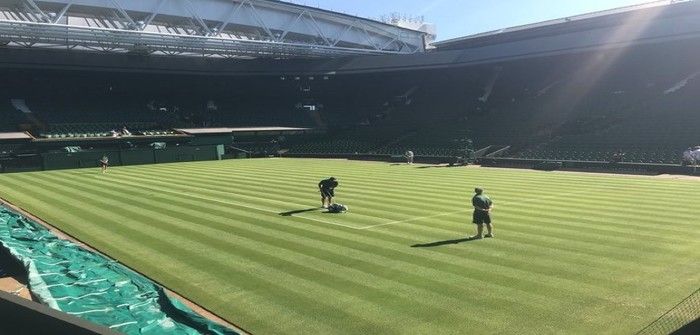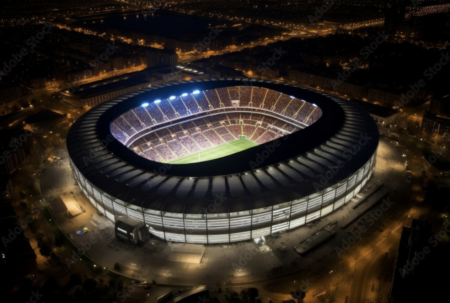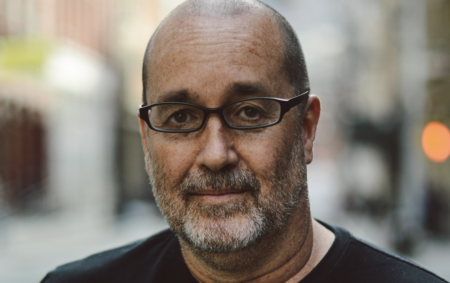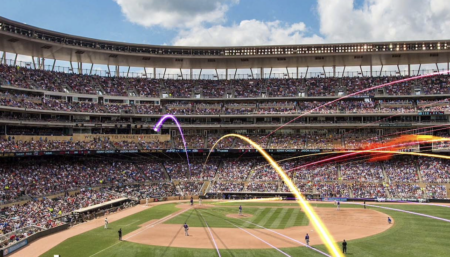Neil Stubley, head of courts and horticulture at the All England Lawn Tennis and Croquet Club, reveals what it takes to prepare and maintain the immaculate grass tennis court playing surfaces before and during The Championships at Wimbledon.
What is the process behind preparing and maintaining the playing surface for Wimbledon?
I look at the playing surface with both the present and upcoming year in mind. There are four weeks of The Championships and looking at it for 2019, the thought process is: ‘What have we done right or what have we done wrong?’ There is a total of 42 acres, with half a mile between the most southerly and the most northerly court. Every court must perform the same, which is always the challenge as so much depends on the weather and micro-climate airflow. No two winters or Championships are the same when managing a living, breathing surface. When working on the courts for this year, I must be mindful of what needs to be done in 2019. This means we work a year in advance for the surface’s overall prosperity.
What does a typical day look like for you?
On a typical day I’m waking up at 5am to check weather reports, then phone into the Club and speak with the team of six that stay in overnight. There’s a night shift making sure inflatable covers are looking good with no holes. I arrive at 6.30 am and the gardening team is in an hour before that to maintain the flowers. The covers come off at 7.30am and all courts are cut, marked by the grounds staff and then nets are put up, so that everything is ready for play to begin at 11 am.
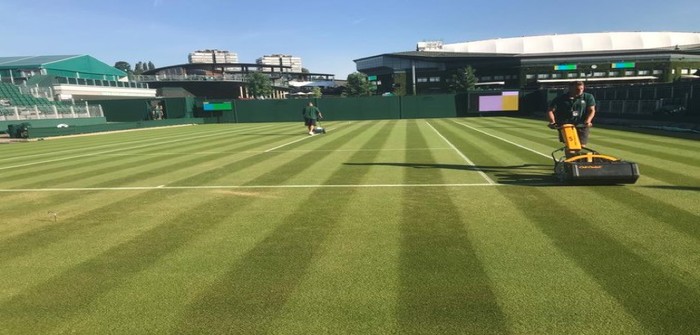
Once the courts are good, then the team does all the moisture, hardiness and live plant cover readings. When matches begin, essentially, we have ‘firefighting’ duties, depending on anything that arises during play. We could be called to courts for whatever reason, then we work on writing irrigation programs depending on the weather that day and the next day to make sure the expectation is understood by all.
Once that is completed we water each court. On a good evening, we can expect to leave around 10pm. If there are a lot of rain delays, then play can go on until 11pm on Center Court. If that’s the case, we won’t be leaving the grounds until midnight and then we’re back at 6.30am. This schedule goes on for three and a half weeks.
What is the biggest challenge during the tournament?
The other grass court tournaments have much smaller draw sizes, usually 32 players, and they play for a week. For The Championships, there are over 650 matches plus a qualifying competition, then a nine-day practice period before the start of the fortnight. It’s as if The Masters opened a week beforehand, then had four days of continuous golfing. It’s such a unique experience that The Championships are played on grass for such a long period of time. When practice begins two weeks out, the grass is in stress and at its wilting point because it is in such an artificial environment. Eight millimeters is the bottom end of where it wants to be, but that’s where it’s set for The Championships. Balancing that precarious position for the plant for an entire month is extremely difficult and we must hope the weather fluctuations aren’t huge.
What has been the best part about bringing the landscaping in-house and how has that shaped the external look of The Championships?
Definitely the overall ambience. One thing you don’t experience when you watch a match on Centre Court or No.1 Court is how well-landscaped the grounds are with all the planting schemes. One of the wow factors is how beautiful the whole grounds are including all the bedding and the flowers.
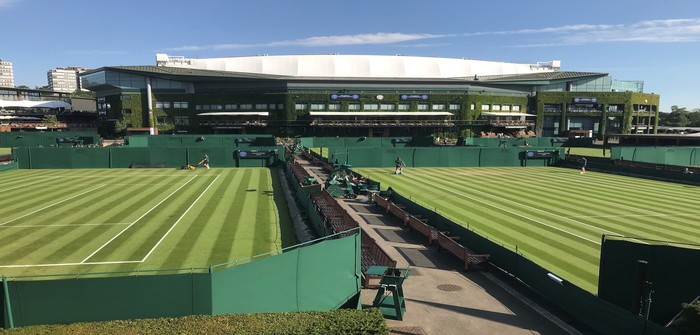
The gardeners must make sure the flowers are peaking and blooming at exactly the right time. They do a planting overlay at the train station, so once you get off the train, there are all the same plants as on the grounds of The Championships. The first experience of Wimbledon starts half a mile away. All the baskets have similar color themes and are displayed during the walk. By the time you’re on the grounds, you’ve got a buzz and you can’t wait for what’s about to occur. The head gardener is very conscious about making it an experience.
Overall there are a lot of living plant walls and different varieties of flowers peaking. You can even pick strawberries off the wall. It is very interactive and those are things you don’t understand if you aren’t actually there.
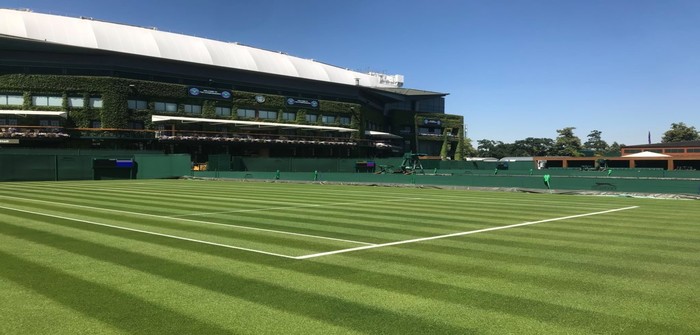
What makes Wimbledon such a popular tournament?
The experience. Once you walk onto the grounds and you know you’re at Wimbledon, you can’t recreate it. You walk away from The Championships knowing you’ve been and you know you won’t experience anything like it. I strive to never become complacent as we can always improve. I always instill that attitude in the team: yes, we delivered a fantastic Championships, the feedback has been great but where can we get even one percent better? We can never get complacent while trying to keep pushing and improving.
Pics: @AELTCGroundsman
July 4, 2018


